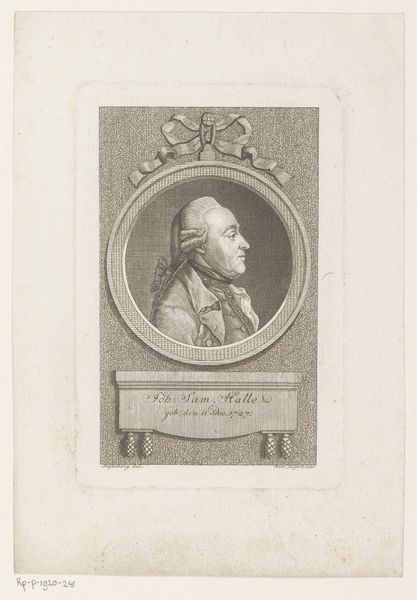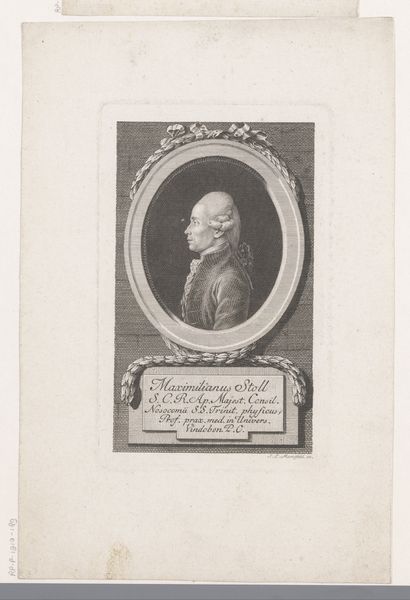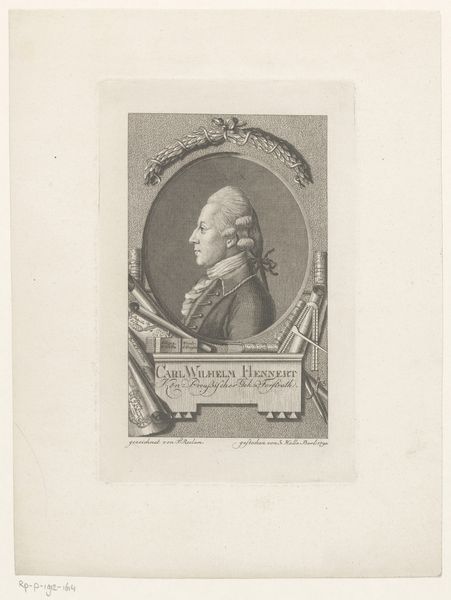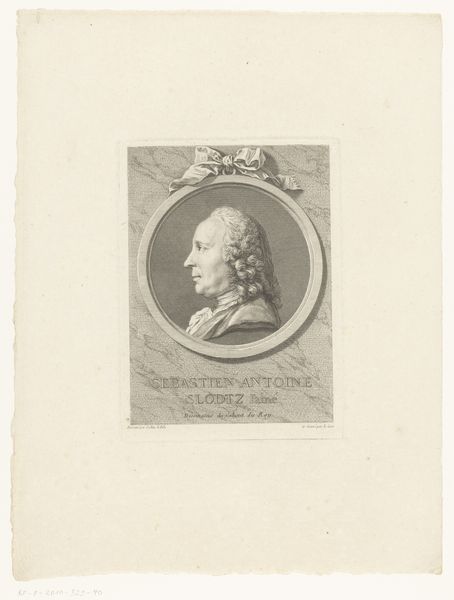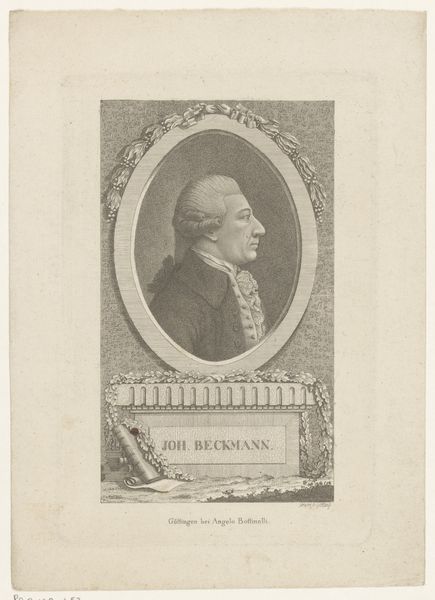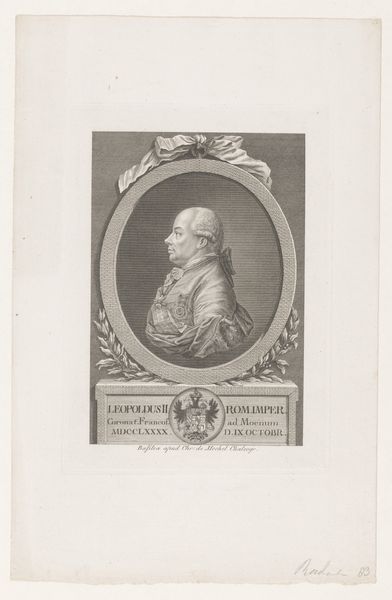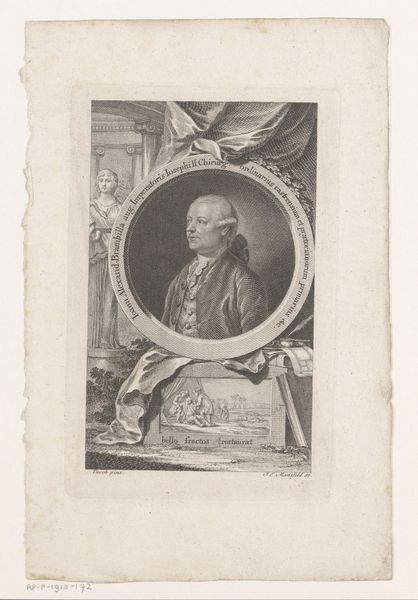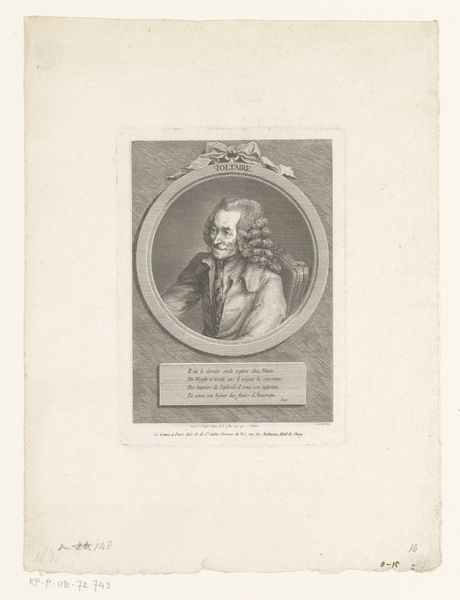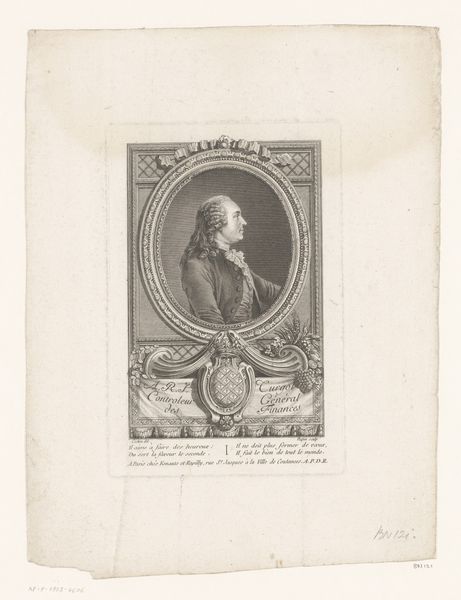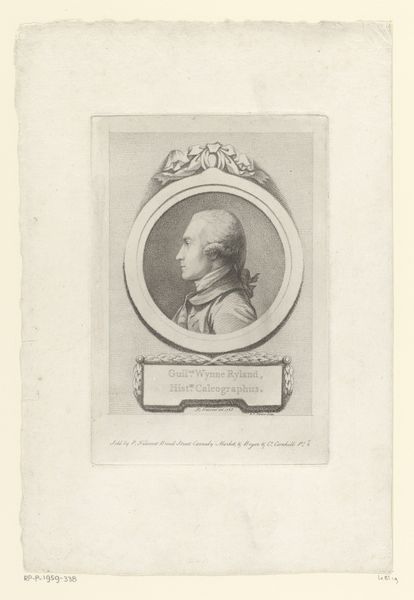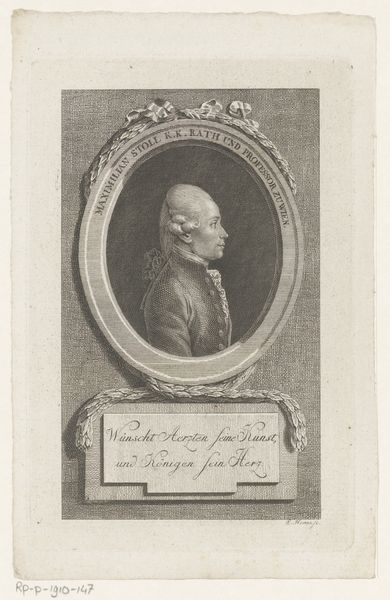
Dimensions: height 239 mm, width 161 mm
Copyright: Rijks Museum: Open Domain
Johann Georg Rosenberg created this print, "Portrait of Thomas Philipp von der Hagen," now held at the Rijksmuseum. Note how the composition is neatly divided into distinct zones: the oval portrait above, an inscribed pedestal below, and decorative elements linking the two. Rosenberg employs a semiotic system of signs. The oval frame containing von der Hagen signifies status and formality, reminiscent of classical portraiture. Below, the pedestal, inscribed with text and heraldic symbols, anchors the image with declarations of identity and lineage. The artist uses line and texture to differentiate surfaces, giving a tactile dimension to the print. What's fascinating is how Rosenberg challenges the purely representational. The portrait isn't just a likeness; it’s a constructed image laden with cultural codes about status, profession, and legacy. The calculated composition invites us to decode the social and intellectual values embedded within the artwork. This print prompts a larger discourse on how portraits function beyond mere depiction.
Comments
No comments
Be the first to comment and join the conversation on the ultimate creative platform.
